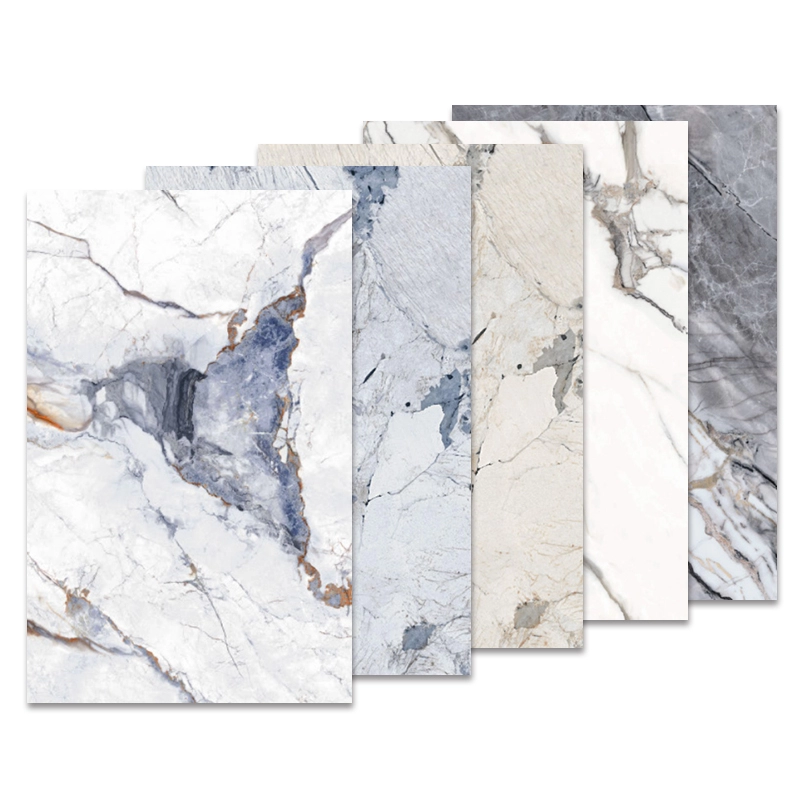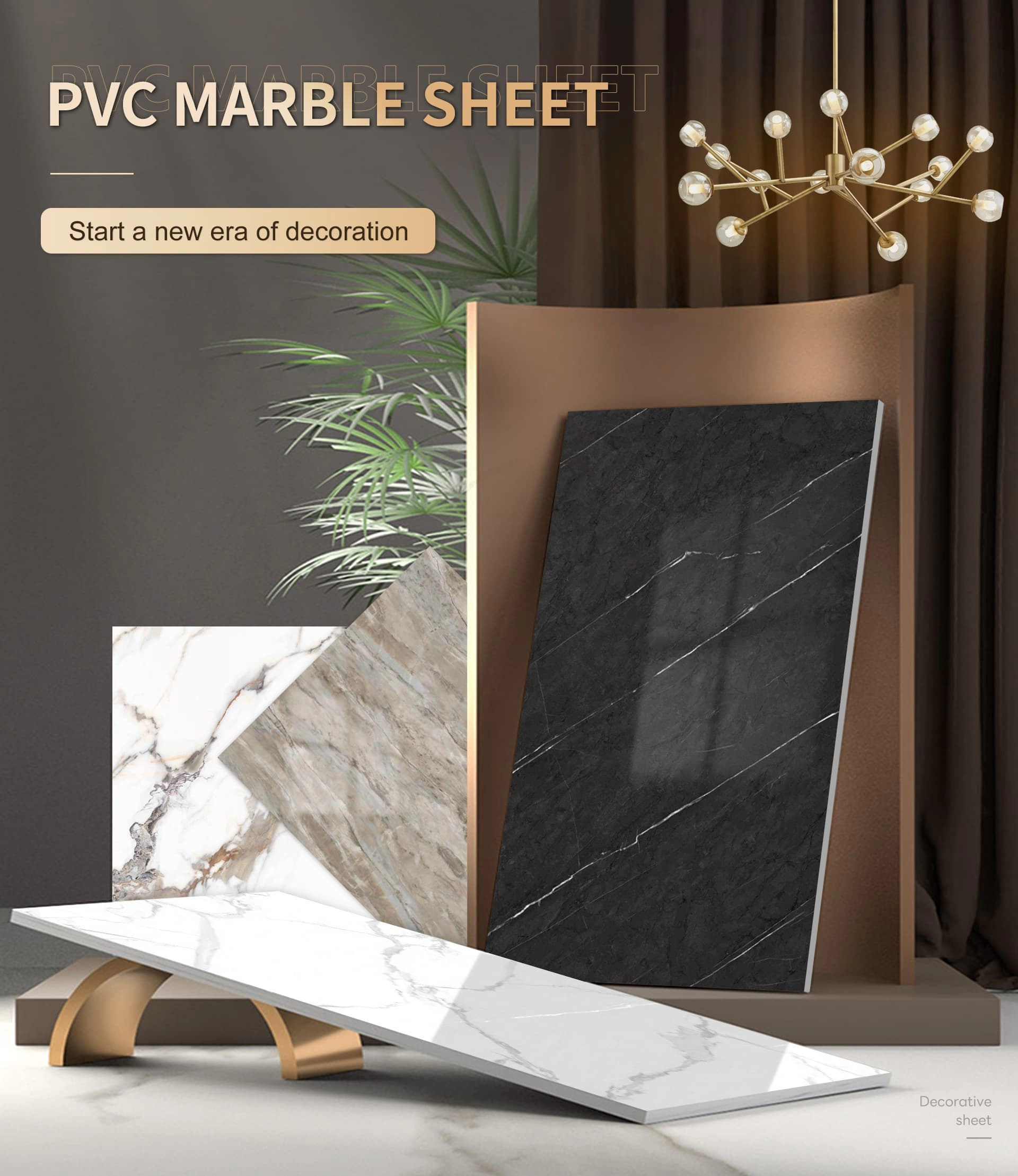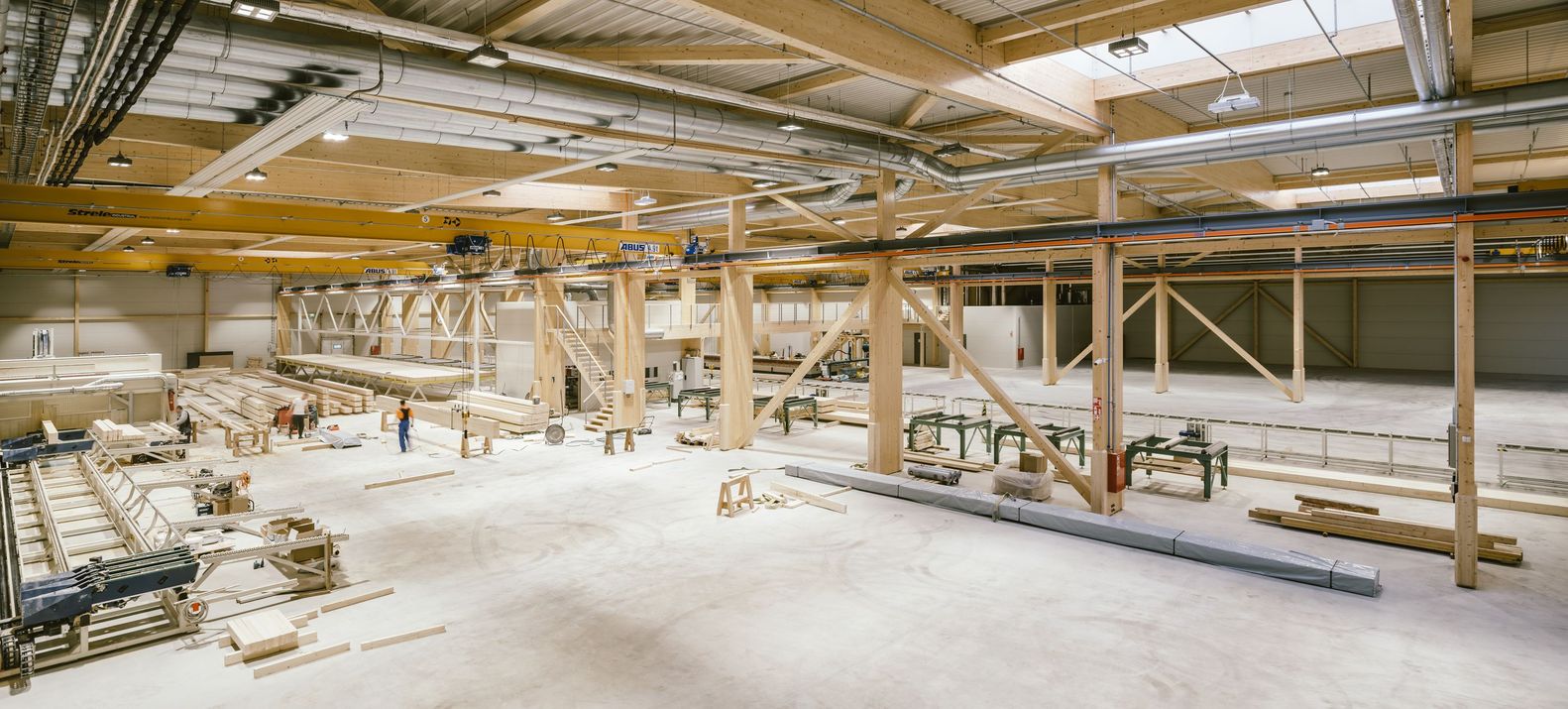CATEGORIES
Real vs. Cultured Marble Countertops: Choosing the Better Choice for Your Dream Home
Choosing the right materials for your home renovation can be overwhelming, especially when it comes to countertops. Marble countertops are often at the top of homeowners' wish lists due to their timeless elegance and luxurious appeal. But did you know there are different types of marble to consider? This article will delve into the world of real marble and cultured marble, comparing their pros and cons to help you make an informed decision for your space. We'll explore everything from durability and maintenance to cost and aesthetics, ensuring you understand which type of marble best fits your needs and budget. Whether you're dreaming of a stunning kitchen island or a spa-like bathroom vanity, understanding the nuances between real and cultured marble is key to achieving your vision.
1. What is Natural Marble and Why is it a Coveted Countertop Material?
Natural marble is a metamorphic rock that has been prized for centuries for its beauty and elegance. Quarried directly from the earth, each marble slab is unique, showcasing a stunning array of colors and veining patterns created by mineral impurities in the limestone from which it originates. This natural stone is formed under immense heat and pressure over millions of years, resulting in a material that is both durable and visually captivating.
The allure of real marble lies in its inherent luxury and timeless appeal. Its cool, smooth surface and distinctive veining add a touch of sophistication to any space, making it a popular choice for countertops, flooring, and wall cladding. For centuries, marble has been used in grand palaces, iconic sculptures, and elegant homes, solidifying its status as a symbol of prestige and refined taste. The inherent variations in natural marble, with its unique veining and color nuances, mean that no two installations will ever be exactly alike, offering a bespoke touch that man has nothing to do with creating other than extracting it from the earth. This exclusivity and connection to the natural world are significant reasons why homeowners and designers continue to gravitate towards real marble for their most cherished spaces.

2. What is Cultured Marble and How Does it Differ from Real Marble?
Cultured marble, on the other hand, is a man-made material that seeks to replicate the look of natural marble. However, despite its name, cultured marble isn’t actually pure marble. Instead, it's a blend of marble dust, resin, and pigments. The way it’s made involves mixing marble dust with plastic cement or polyester resin, along with dye to achieve desired colours and patterns. This mixture is then poured into molds and subjected to heat and pressure to solidify. Finally, the surface gets coated with a clear gel coat for gloss and protection.
The key difference lies in the composition and formation process. Real marble is a product of nature, formed geologically over millennia, while cultured marble is an artificial marble is one that is engineered in a factory setting. While cultured marble incorporates marble dust, it's the resin and other additives that bind it together. This manufacturing process allows for greater consistency in color and pattern compared to the natural variations found in marble stone. Although cultured marble aims to mimic the aesthetic of marble, it is fundamentally a different material with its own set of characteristics, distinct from marble and real marble sound and feel. It is often considered an alternative to natural marble, offering a similar look at a potentially different price point and with varying performance attributes.
3. Real Marble vs. Cultured Marble Countertops: What Are the Key Feature Differences?
When comparing real marble and cultured marble for countertops, several key feature differences emerge. Real marble, being a natural stone, is porous and softer than granite or quartz. This porosity means it can stain more easily if spills are not cleaned promptly, especially from acidic substances like lemon juice or wine. It's also more susceptible to scratching and etching, particularly from sharp objects or acidic cleaning products. However, its heat resistance is exceptional, making it suitable for withstanding hot pots and pans.
Cultured marble, due to its resin composition and non-porous gel coat, is significantly more stain-resistant and less porous than natural marble. This makes it a cleaner and more hygienic option, as it's less likely to harbor bacteria. It's also generally more resistant to scratching and chipping than natural marble, although the gel coat can be damaged by abrasive cleaning products. However, cultured marble is less heat-resistant than real marble and can be damaged by prolonged exposure to high temperatures. A key visual difference is the veining. While real marble boasts natural veining that is unique and varied, cultured marble often has manufactured veining that can appear more uniform and less random, sometimes lacking the depth and complexity of natural marble. The consistent look of cultured marble can be seen as a pro or con depending on your aesthetic preference.
Here's a table summarizing the key feature differences:
| Feature | Real Marble | Cultured Marble |
|---|---|---|
| Material | Natural Stone | Man-made (Marble dust & Resin) |
| Porosity | Porous | Non-porous (Gel Coat) |
| Stain Resistance | Lower | Higher |
| Scratch Resistance | Lower | Higher (Gel Coat) |
| Heat Resistance | High | Moderate |
| Veining | Natural & Unique | Manufactured & Consistent |
| Maintenance | More Demanding | Less Demanding |
| Cost | Generally Higher | Generally Lower |
4. Durability Showdown: Is Real Marble or Cultured Marble More Resistant to Scratches and Stains?
When it comes to durability, both real marble and cultured marble have their strengths and weaknesses. Real marble, while undeniably beautiful, is marble is quite a soft and porous stone. This makes it more prone to scratching, etching, and staining, especially in high-traffic areas like kitchen countertops. Acidic substances such as vinegar, citrus juices, and even some cleaning products can etch the surface of real marble, leaving dull marks. Spills, if not wiped up immediately, can penetrate the porous surface and cause permanent stains.
Cultured marble, on the other hand, offers better resistance to stains and scratches due to its non-porous gel coat. The resin-based composition makes it less susceptible to absorbing liquids, and the protective gel coat provides a barrier against surface damage. In terms of scratch resistance, cultured marble is generally more durable than real marble in everyday use. However, it's important to note that the gel coat can be scratched by abrasive cleaning products or sharp objects. While real marble can also sustain chips, cultured marble is also susceptible to chipping, particularly at the edges and corners. In a direct durability showdown concerning scratch and stain resistance for countertops, cultured marble generally outperforms real marble, making it a more practical choice for busy households or areas prone to spills and heavy use.
5. Cleaning and Maintenance: Cultured Marble vs. Real Marble – Which is Easier to Care For?
Ease of clean and maintainance is a significant factor for many homeowners when choosing countertops. Real marble, with its porous nature, requires more diligent care to keep it looking its best. Regular sealing is crucial to help protect it from stains. Daily cleaning should be done with a mild, non-abrasive cleaner specifically designed for natural stone. Spills should be wiped up immediately, especially acidic liquids, to prevent staining and etching. Avoid using harsh chemicals or abrasive cleaners, as these can damage the marble surface over time.
Cultured marble is marble is comparatively easier to clean and maintain due to its non-porous gel coat. This surface resists stains and is less prone to harboring bacteria, making cleaning simpler. Typically, cultured marble can be cleaned with soap and water or a mild, non-abrasive household cleaner. Avoid abrasive cleaners that can dull or scratch the gel coat's gloss. While sealing is not required for cultured marble, it's still important to avoid harsh chemicals and excessive heat. In terms of daily upkeep and long-term maintenance, cultured marble is the cleaner and more straightforward option, requiring less effort to keep it looking pristine compared to natural. This ease of maintenance is a significant advantage for busy homeowners seeking a beautiful yet practical countertop solution.
6. Aesthetic Appeal: Can You Really Tell the Difference Between Faux Marble and Real Marble?
The aesthetic appeal is where the comparison between real marble and cultured marble becomes more subjective. Real marble is celebrated for its unparalleled natural beauty. The veining in natural marble is formed organically, creating intricate and unique patterns that vary from slab to slab. This veining often has depth and translucence that is difficult to replicate. The colours and patterns in real marble are a result of geological processes, offering a richness and complexity that many find unmatched.
Cultured marble, while designed to mimic marble, often falls short in replicating the authentic depth and variation of natural veining. The veining in faux marble can appear more surface-level and less random, sometimes looking printed or artificial upon closer inspection. However, advancements in manufacturing have improved the realism of cultured marble, and many options now offer convincing visual similarities to marble. From a distance, or in photographs, the difference might be subtle. However, to a discerning eye, especially someone familiar with real marble, the nuances in veining, texture, and overall depth of natural marble are typically discernible. Ultimately, whether you can "tell the difference" depends on the quality of the cultured marble and your personal level of scrutiny. If you prioritize the unique, natural beauty and prestige of real marble, then cultured marble, even high-quality faux marble, might not fully satisfy your aesthetic desires. However, if you seek the like marble look with greater consistency and potentially lower cost, cultured marble can be a very appealing option.

7. Cost Considerations: Is Cultured Marble a More Budget-Friendly Alternative to Natural Marble Countertops?
Cost is a major factor for most homeowners, and this is where cultured marble often shines. Real marble, being a natural stone that needs to be quarried, processed, and transported, is generally more expensive than cultured marble. The price of real marble can vary widely depending on the type, rarity, and slab thickness, but it typically falls into a higher price bracket compared to many other countertop materials.
Cultured marble, being a man-made product, is typically more affordable than real marble. The manufacturing process is more controlled and less labor-intensive than quarrying and processing natural stone. This cost-effectiveness is a significant advantage of cultured marble, making it an attractive option for homeowners seeking the marble look on a tighter budget. The price difference can be substantial, allowing you to achieve a similar aesthetic without the premium cost associated with natural marble. While the initial material cost of cultured marble is lower, it's important to consider the overall value proposition, including durability, longevity, and aesthetic preferences, to determine the most cost-effective choice in the long run. For budget-conscious renovations, cultured marble presents itself as a compelling better choice in terms of upfront cost compared to marble over natural.
8. What Are the Potential Drawbacks of Choosing Natural Marble Countertops?
Despite its beauty, choosing natural marble for countertops does come with potential drawbacks. The porosity of real marble makes it susceptible to staining, etching, and scratching, requiring more diligent maintenance and care. Acidic substances are a major concern, and spills need to be cleaned immediately to prevent damage. The softer nature of marble means it's more prone to scratches and chips compared to harder surfaces like granite or quartz.
Another potential drawback is the variability in natural marble. Each slab is unique, and while this uniqueness is part of its charm, it also means that achieving a perfectly consistent look across a large countertop area or multiple surfaces can be challenging. Color variations and veining patterns can differ significantly between marble slabs, which may not be ideal for those seeking uniformity. Furthermore, marble may require professional installation and specialized cleaning products, adding to the overall cost and maintenance effort. For some homeowners, the higher price point of real marble compared to cultured marble or other countertop materials can also be a limiting factor. Ultimately, the drawbacks of natural marble center around its higher maintenance needs, vulnerability to damage, and cost, which may deter those seeking a more practical and low-maintenance countertop solution.
9. What Are the Potential Drawbacks of Choosing Cultured Marble Countertops?
Cultured marble, while offering several advantages, also has its potential downsides. While it is more stain-resistant than real marble, the gel coat surface can be scratched or dulled by abrasive cleaners or sharp objects. If the gel coat is damaged, it can be difficult to repair and may compromise the stain resistance of the countertop. While chips can be repaired with a retail repair kit, large chips and cracks may require a professional restoration technician.
Aesthetic limitations are another consideration. While cultured marble mimics the look of marble, it often lacks the depth, translucence, and unique natural veining of real marble. The manufactured veining can sometimes appear less realistic, especially to those familiar with natural stone. Although cultured marble is more heat-resistant than some other man-made materials, it is not as heat-resistant as real marble and can be damaged by prolonged exposure to high temperatures. Hot pots and pans should not be placed directly on cultured marble surfaces. Finally, while cultured marble is generally durable, it may not have the same longevity as natural marble. Over many years, the resin and gel coat can potentially yellow or show wear, although proper care can minimize these effects. The drawbacks of cultured marble primarily relate to its potential for gel coat damage, aesthetic limitations compared to natural marble, and moderate heat resistance.

10. Real vs. Cultured Marble: Making the Right Choice for Your Home Design Project.
When it comes to choosing between real marble and cultured marble, there's no single "best" option. The better choice depends entirely on your individual needs, priorities, and lifestyle. If you prioritize the unparalleled natural beauty, prestige, and unique character of real marble, and are prepared for the higher maintenance and cost, then natural marble might be the ideal choice for you. Marble is one of the most luxurious countertop materials available, and its timeless appeal can elevate any space.
However, if you seek the like marble aesthetic with greater practicality, easier maintenance, and a more budget-friendly price point, then cultured marble is an excellent alternative to natural marble. Cultured marble offers good stain and scratch resistance, is easier to clean, and comes in a wide range of colours and patterns. It's a particularly suitable choice for bathrooms, vanities, and other areas where ease of maintenance is paramount. Consider your lifestyle, budget, and aesthetic preferences carefully. Are you prepared for the upkeep of natural marble to enjoy its unique beauty? Or would you prefer the practicality and affordability of cultured marble while still achieving a marble-inspired look? Reflecting on these questions will guide you towards choose the right marble option for your home. Remember, both real and cultured marble can add elegance to your home; the key is aligning your choice with your specific needs and desires.
11. Expert Tips for Selecting the Perfect Marble Option for Your Space.
Choosing the right marble, whether real or cultured, involves careful consideration. Here are some expert tips that will help you make the best decision:
- Assess Your Lifestyle: Consider how you use your space. For high-traffic kitchens prone to spills and heavy use, cultured marble might be more practical due to its stain resistance. For a master bathroom where aesthetics are paramount and usage is gentler, real marble could be a luxurious indulgence.
- Set a Budget: Real marble is significantly more expensive. Determine your budget upfront to guide your choice. Cultured marble offers a better choice for budget-conscious renovations.
- Evaluate Maintenance Tolerance: Be honest about your willingness to maintain real marble. If you prefer low-maintenance surfaces, cultured marble is the easier option. For real marble, commit to regular sealing and careful cleaning.
- Examine Samples in Person: Always view samples of both real and cultured marble in person, under different lighting conditions. This allows you to truly appreciate the colours and patterns and assess the visual appeal of each material.
- Consider Edge Profiles and Detailing: The edge profile and detailing can significantly impact the overall look. Both real and cultured marble offer various edge options. Discuss these with your fabricator to achieve your desired style.
- Ask About Warranties: Inquire about warranties for both real marble (installation and sealing) and cultured marble (manufacturing defects). Warranties can provide peace of mind and protect your investment.
- Think Long-Term Value: Real marble is a timeless material that can add resale value to your home. Cultured marble provides a beautiful and cost-effective alternative, but its long-term value proposition might be different.
- Consult Professionals: Talk to interior designers, contractors, and marble suppliers. Their expertise can provide valuable insights and help you navigate the selection process. We at Xihongbm are always ready to help you explore your options in wall panels and decorative sheets!
By carefully considering these tips, you can confidently choose the right marble option that perfectly balances beauty, practicality, and your personal preferences for your home. Remember, both cultured marble and real marble offer unique benefits, and the ideal choice is the one that best aligns with your specific needs and vision.
Key Takeaways: Real vs. Cultured Marble
- Real Marble: Natural stone, unique veining, luxurious, higher maintenance, more expensive, porous, susceptible to stains and scratches, excellent heat resistance.
- Cultured Marble: Man-made, consistent look, more affordable, lower maintenance, stain and scratch-resistant (gel coat), less heat resistant than real marble, less unique veining.
- Durability: Cultured marble generally more stain and scratch-resistant in everyday use.
- Maintenance: Cultured marble is easier to clean and maintain.
- Aesthetics: Real marble offers unparalleled natural beauty and unique veining; cultured marble mimics the look but may lack depth.
- Cost: Cultured marble is significantly more budget-friendly.
- Consider your lifestyle, budget, and aesthetic priorities to make the right choice.
For more information on beautiful and durable wall panel solutions, explore our range of WPC wall panels and PVC marble sheets. We offer high-quality, customizable options perfect for any interior design project. Thinking about bathroom renovations? Our bathroom wall panels provide stylish and waterproof solutions. And for a touch of luxury in any room, consider our decorative wall panels. We are here to help you create the home of your dreams with cost-effective and elegant solutions!





